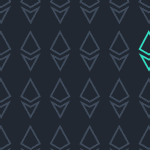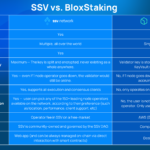Hello, BloxStakers!
The ETH staking ecosystem has seen some significant developments in a short period of time. With the advent of LSTFi, Restaking, DVT, and more, staking-as-a-service (SaaS) is becoming super competitive. By integrating new technologies, SaaS providers can improve security, reduce risks, and potentially help improve the Ethereum network’s health.
What is SSV Network (SSV), you ask?
SSV: a New Standard for ETH Staking
The SSV Network is an open-source, permissionless, and DAO-driven protocol that is set to become part of the critical ETH staking infrastructure. The beauty of SSV infrastructure is that it’s permissionlessly plug-and-play. With a builders ecosystem of over 55 projects the protocol can be used to build various use cases ranging from squad staking to staking services like Bloxstaking. SSV’s world class infrastructure has already secured over $300M in staked ETH with more than 150 different node operators.
How does SSV solve challenges faced by the ETH staking industry?
Let’s start with the basics.
SSV is an infrastructure solution based on DVT that enables the secure encryption, splitting, and distribution of a validator private key and its duties to a cluster of trust-minimized node operators.
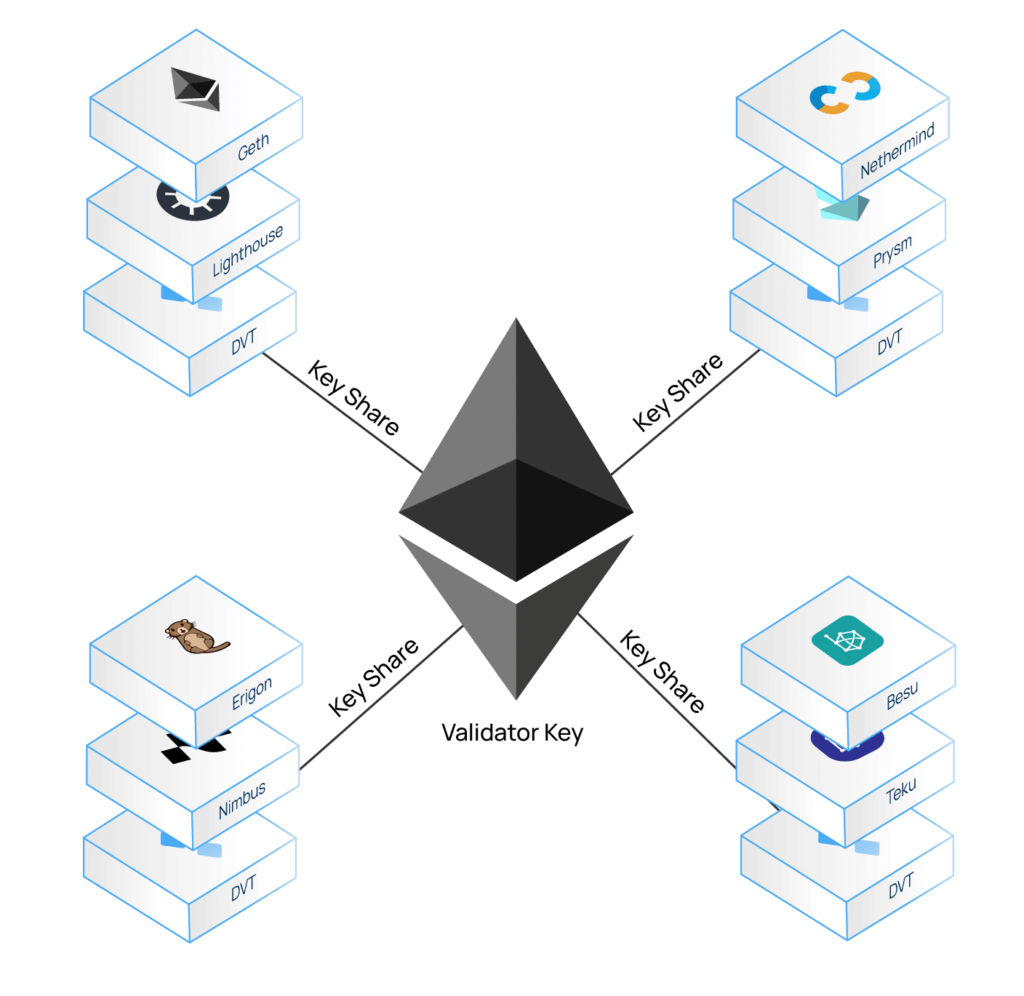
Key Security: Validators generate two key pairs: validator keys for consensus and withdrawal keys to access funds. Standard validator setups need the key online all the time to submit attestations to the network, or, in the case of BloxStaking, stored in the cloud. Keeping the validator private key online 24/7 presents an attack vector and puts the validator at risk.
Keyshares significantly enhance security in a cluster by distributing portions of the encrypted private key to each operator. When a task arises, each operator signs it with their assigned keyshare, and these individual signatures are amalgamated to reconstruct the complete signature. This approach eliminates the necessity of maintaining the entire validator key in a hot wallet. Instead, only encrypted keyshares are stored, reducing attack vectors. Each keyshare is encrypted to specific operators, and no single operator can independently recreate the entire key, fortifying the system against potential security breaches and malicious actors.
Single Points of Failure: In a cluster of node operators, a threshold of offline nodes is tolerated. This means that even if one component fails, the other node operators ensure continuous validator operation. This enhances system resilience and eliminates single points of failure. By using a collaborative approach, there is no need to rely on a single validator; a group of nodes collectively runs the system, employing consensus mechanisms and threshold signing. This not only achieves fault tolerance but also allows for the implementation of diverse setups within the group, further reducing the risk of a singular failure affecting the overall system.
Ethereum Decentralization: When you distribute your key to different operators on the SSV Network, you can select these operators based on location, performance, EL/CL clients, and MEV relays. Each operator’s unique geographical and jurisdictional position reduces the risk of validator downtime due to outages, hardware or software failures, or jurisdictional issues. This enhances the validator – and by extension, Ethereum’s – overall network resilience and health.
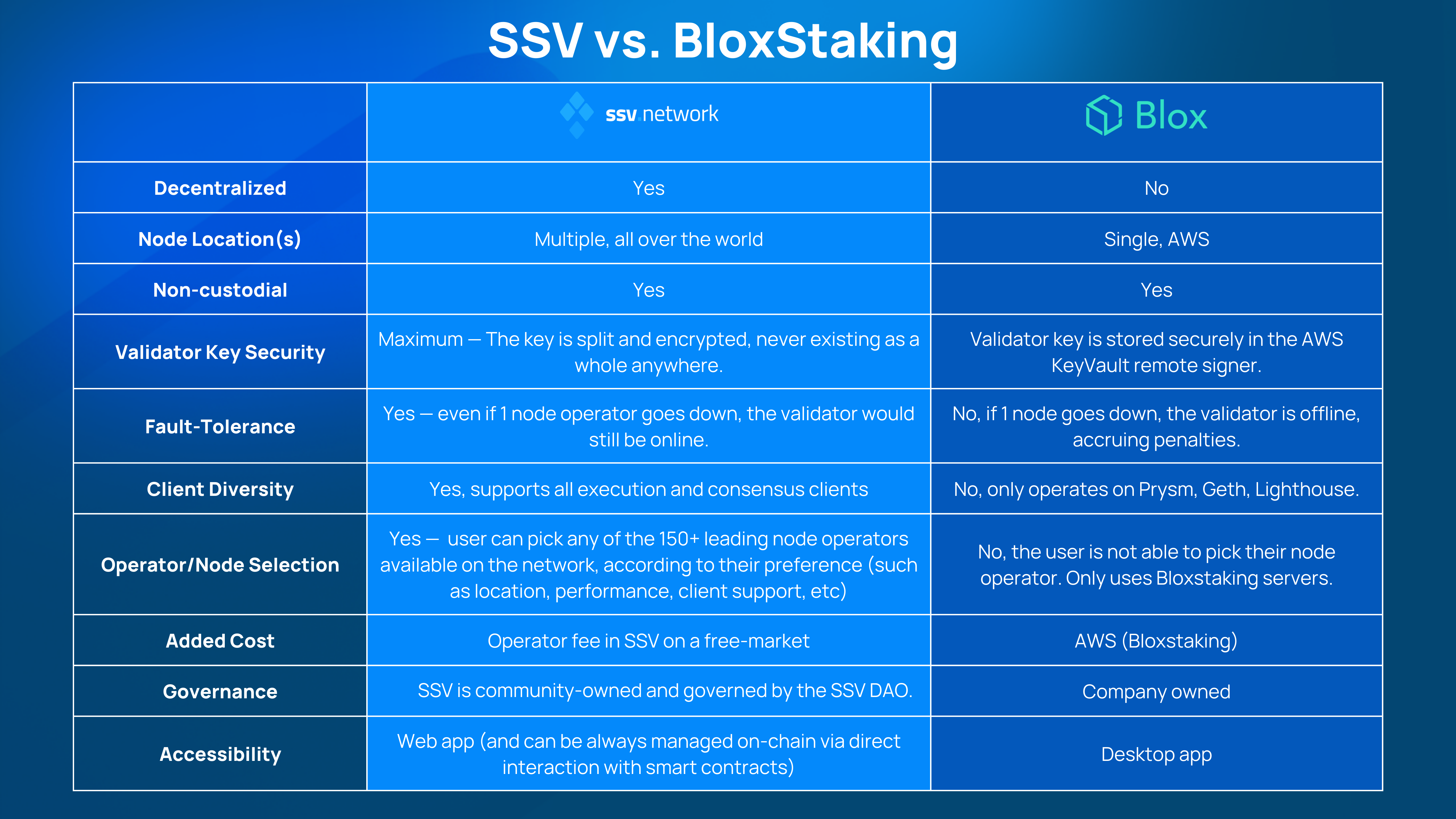
SSV Feature Highlights
Seamlessly access world-class node operators – With 1 simple transaction, users can securely and permissionlessly run their validators on operators that they choose (no coordination required). These can be top-of-the-line staking entities that are trusted and have a proven track record of operating validators. No email, sign-ups, or outdated web2 infrastructure is required.
Customization – SSV allows stakers to have full control over who operates their validators. If you find one of the operators is underperforming or inactive, you can easily swap it with any of the other node operators in the network.
Maximize rewards – With SSV, a validator will remain online as long as a threshold of operators submit their duties to the network. This means that if 1 operator goes down in a cluster of 4, nothing will happen! You will not lose rewards or experience downtime. Cluster sizes can also be expanded to accommodate more operators (up to 13 at the moment). This essentially mitigates slashing risks and increases the tolerance to any faults that may occur, such as client bugs, hardware failures, and connectivity issues, maximizing uptime and, therefore, rewards.
Additionally, Incentivized mainnet! – What is SSV’s Incentivized Mainnet Program?
The Incentivized Mainnet Program is a 12-month long initiative set forth by the SSV DAO in order to foster DVT usage by rewarding early adopters of SSV. This makes all validators on the SSV network eligible for a boost in their APR. Meaning, that if you migrate to SSV, you’ll be able to get rewards every month.
The latest reward calculations are 🔥 with 3,431 eligible validators, a whopping $321,802 worth of SSV will be distributed for this round!
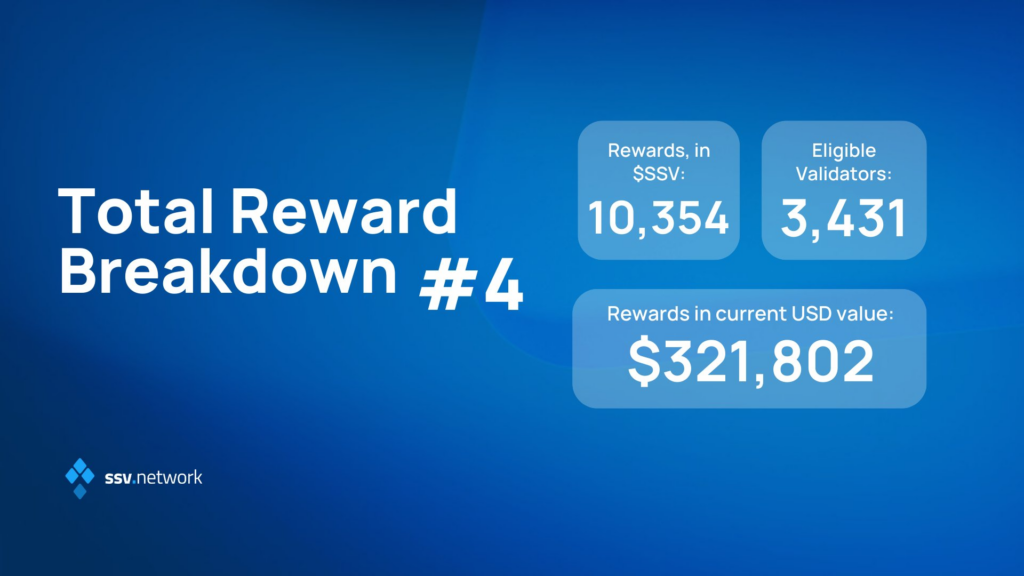
With the ever-evolving staking landscape, it’s important that stakers keep abreast with the latest technologies. In the mission to be a part of the staking landscape’s evolution, Blox has contributed to the ssv.network to support both stakers and the Ethereum network as a whole.
